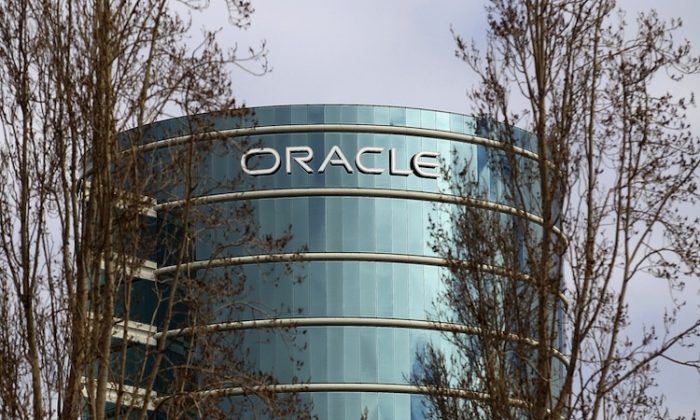Earnings per share (EPS) rose 24 percent, while total revenue came to $14.1 billion, up 9 percent, led by net gains in the cloud infrastructure industry.
“The key number to look at here for growth is cloud infrastructure,” Rebecca Weightman, CEO of trade analyst company Valoir, told The Epoch Instances.
“While still smaller than AWS, Google and Microsoft, Oracle has a growing presence – whereas just a few years ago Oracle was not taken seriously in this space. Oracle has deeper and broader business relationships with many of its customers than hyperscalers, which have a limited game beyond cloud infrastructure that it can leverage to its advantage.
Control was proud of the company’s efficiency.
“Record levels of AI demand drove Oracle Cloud Infrastructure revenue up 52 percent in the second quarter, much more than any of our hyperscale cloud infrastructure competitors,” Oracle CEO Safra Catz said in a comment without discounting the monetary impact. There is a higher growth rate.”
“Growth in the AI segment of our infrastructure business was extraordinary – GPU consumption grew 336 percent in the quarter – and we delivered the world’s largest and fastest AI supercomputer, scaling up to 65,000 NVIDIA H200 GPUs (graphics processing units).”
Wall Boulevard didn’t keep sentiment in check, causing Oracle shares to fall sharply in the after-hours on Monday and pre-opening hours on Tuesday. On the other hand, Oracle’s momentum is still up 80 percent, which suggests that even a sharp decline in the company’s shares is simply profit-taking in exchange for something extra serious.
For Siddharth Ramasingheni, director of technology and operations at cloud communications corporate Twilio, Oracle’s second-quarter results reveal a fascinating strategic tension. While the company is making significant progress in cloud infrastructure and AI applications, evidenced by a 52 percent expansion in cloud infrastructure to $2.4 billion, the entire expansion story shows signs of slowing down, he said.
“This presents both opportunities and challenges in Oracle’s transformation from a traditional database company to a cloud and AI player,” he advised The Epoch Instances.
Ramasingheni says the real story is not about the quarterly decline but about Oracle’s growing market.
“With cloud services now accounting for 77 percent of total revenues ($10.81 billion), we are seeing a successful business model transformation,” he said. “However, the decline in growth rates suggests that Oracle is facing natural challenges of scale in this transition.”
He says Oracle’s strategic partnership with Meta to manufacture llama fashion is an important step on this transformation.
“While AWS, Azure and Google Cloud dominate the cloud infrastructure space, Oracle is carving out a niche in AI workloads,” Ramasingheni said.
Larry Ellison, Oracle’s president and chief generation officer, made the point after breaking down second-quarter financials.
“Oracle Cloud infrastructure trains many of the world’s most important generative AI models because we are faster and less expensive than other clouds,” he said.
“And we just signed an agreement with Meta – for them to use Oracle’s AI cloud infrastructure – and to collaborate with Oracle on the development of AI agents based on Meta’s Llama model. Oracle Cloud trains dozens of specialized AI models and embeds hundreds of AI agents into cloud applications.
Nonetheless, Ramasingheni expressed concerns about expansion and stability, as evidenced by Wall Boulevard’s hostile reaction to the second quarter monetary implications.
“While the company’s estimate of 7-9 per cent revenue growth for the next quarter may look solid, it is below market expectations,” he said. “This raises questions about Oracle’s ability to maintain pace in an increasingly competitive cloud market.”
Ramasingheni said the key to Oracle’s good fortune will likely depend on three elements. First, the execution of its AI infrastructure technology, specifically the deployment of 131,000 Nvidia Blackwell GPUs. 2D, maintaining aggressive differentiation in a market dominated by large cloud suppliers. Third, successfully transitioning a deeper enterprise buyer to cloud and AI products and services.
He added, “This is not just a story about quarterly numbers – it’s about Oracle’s transformation into a major player in the cloud and AI era, while coming up with expectations that come with their impressive 80 percent stock appreciation this year.” has been managed.”
This is difficult in an AI market that is moving fast.
“As companies transition from the FOMO (fear of missing out) phase to the FOMU (fear of messing up) phase of generic AI adoption, providers will need to step up,” Wightman said.
“Explaining their vision and showing their unique value to customers will be key – not just to drive adoption but to provide real, lasting value.”


